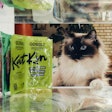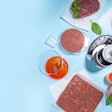
In grain processing, the size of the particles can influence the digestibility of the plant-based pet food ingredients often used as carbohydrate sources. However, particle size may not have an effect protein or fat digestibility in poultry by-product meals used as dog food ingredients. Likewise, by-product meal particle size doesn’t seem to affect fecal quality or palatability. Researchers at the University of Veterinary Medicine in Hannover, Germany conducted an experiment to study the influence of poulty by-product meal grinding on nutrient digestibility and the structure of dogs’ feces.
“For sustainable food, animal production is significantly enhanced by using pet-food-grade animal by-products as feed components,” the scientists wrote in the journal Life. “In this present study, it is noted that the use of poultry by-product meal in the dog diets was well accepted. Furthermore, when dogs were fed diets containing coarsely or finely ground poultry carcasses and neck meals, neither the digestibility nor the fecal characteristics were affected. Thus, it was possible to use a poultry by-product meal of either coarse or fine particle sizes in dog diets. However, further studies are still required to investigate the effect of full substitution of poultry carcasses as a complete feed for companion animals in terms of nutritional balance.”
The study involved six Beagles. All six dogs ate foods made with one of three grind sizes of by-products: course, fine or very fine. After five days on each diet, researchers collected the dog’s feces and analysed it for organic matter, crude protein and crude fat digestibility. Following fecal collection, the scientists switched the dogs to one of the other diets, then the third, following the same collection procedure.
Pet food by-products and sustainbility
Pet food ingredients can make use of many parts of an animal that would otherwise be wasted. Every bone, cut and skin scrap used means more efficient use of the feed, water and other resources used to rear the livestock, even when farming silkworms. Before recycling even entered the English language in 1922, though, some pet food and animal feed ingredient companies reduced the amount of waste produced by reusing byproducts of the human food system, although the environmental benefits may have been coincidental.














